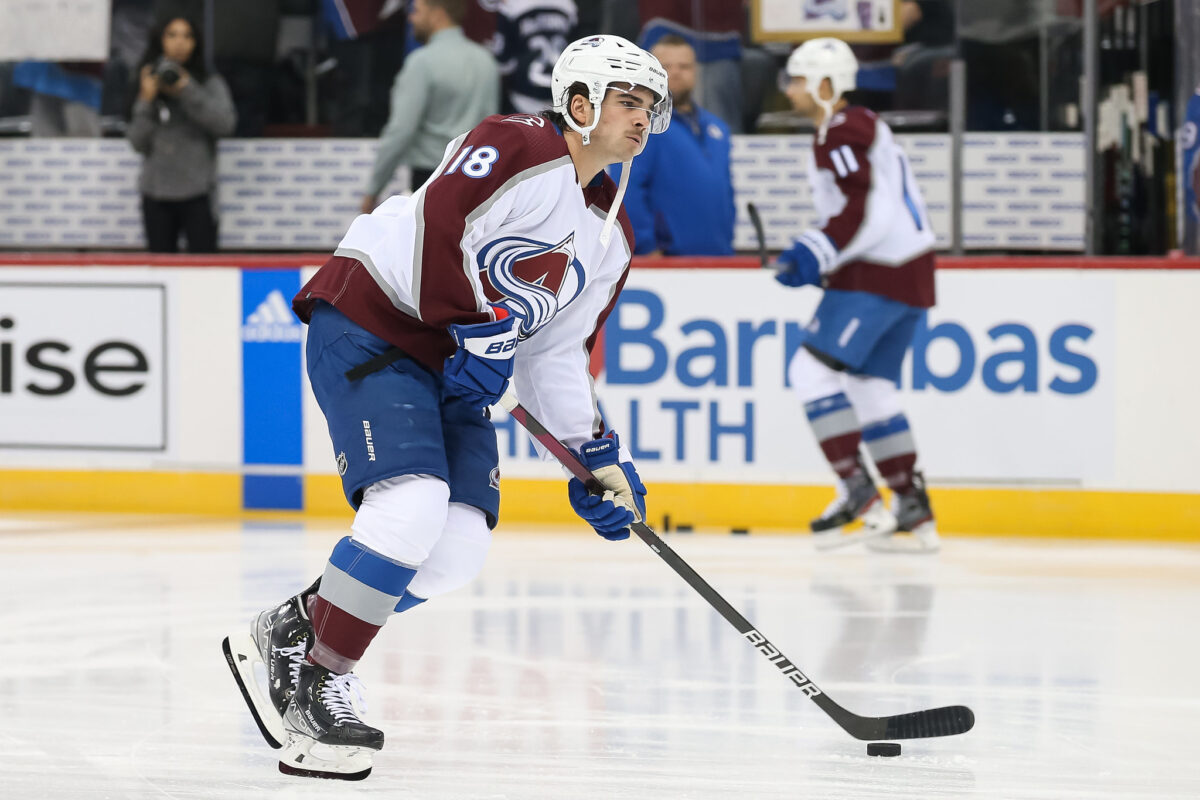The Montreal Canadiens trade for forward Alex Newhook seemed to come out of nowhere. Even so, there’s at least a foundation for the restricted free agent’s impending contract in place.
Related: Canadiens Keep Adding to Forward Depth with Newhook Trade
In an ideal world, he and the Canadiens would find common ground similar to what they did with fellow-forward Rafael Harvey-Pinard. Harvey-Pinard was similarly an RFA coming out of his entry-level deal, albeit at age 24, compared to Newhook’s 22 years of age. Considering Newhook’s 159 NHL games played compared to Harvey-Pinard’s 38, the former’s simply more established in his NHL career, making a deal along the lines of the latter’s two-year, $2.2 million extension out of the question for all intents and purposes.

To be fair, it wasn’t that out of the question, considering the success of Harvey-Pinard’s rookie season. He scored a ninth-ranked 14 goals (among rookies) in just 34 games to go along with six assists, totaling 20 points, which translates to a 48-point pace over a full schedule. Newhook meanwhile did play all 82 games, scoring 14 goals himself along with 16 assists for 30 points, meaning technically Harvey-Pinard enjoyed more success.
Newhook vs. Harvey-Pinard
However, as alluded to earlier, there are extenuating circumstances. For example, while Harvey-Pinard, credit to him, obviously took great advantage of the opportunity presented to him, it may not have even taken form had the Canadiens not suffered through a second straight injury-plagued season to historical extents.

As a result, Harvey-Pinard got regular ice time on the “top line” with Nick Suzuki as his second-most-common left winger (Cole Caufield), a situation that in all likelihood wouldn’t have taken shape otherwise. In fact, with Newhook’s acquisition, there’s a realistic chance previous assessments of Harvey-Pinard fitting into the top six this coming season are no longer realistic. That’s simply the nature of the logjam up front… and a testament to Harvey-Pinard’s rugged playing style and projected versatility to play anywhere in the lineup.
Contrast that with Newhook’s experience with the Colorado Avalanche last season. He played 13:57 on average (17:14 for Harvey-Pinard), finding himself on the fourth line in the playoffs. So, there’s every reason to believe Newhook can outproduce Harvey-Pinard if he’s put in a similar advantageous situation. Furthermore, there’s every reason to believe the Canadiens are going to give Newhook that chance.
Newhook vs. Dach
You don’t give up what the Canadiens did to get Newhook (a package including two relatively high picks out of a stacked draft class) unless you have relatively big plans for him. So, for that reason, there’s clearly more of a parallel to the Kirby Dach acquisition at the 2022 NHL Entry Draft and his subsequent extension. For a refresher, the Canadiens acquired Dach to be the team’s second-line center, eventually signing him to a four-year, $13.45 million deal.

There are obviously other similarities between the two beyond the fact both were acquired on the first days of back-to-back drafts. Both Dach and Newhook struggled to gain traction on the teams that drafted them (each as centers and each in 2019). With Dach likelier than not set to return to his role complementing Suzuki and Caufield on the top line at right wing as a result of the success the three enjoyed together, there’s even the possibility the Canadiens traded for Newhook to center the second line.
The differences are as follows: Dach, as the third-overall pick that 2019 Draft, has a bigger pedigree (and arguably higher ceiling). Also, even though Dach played a significant amount of time on the wing due to the emergence of Sean Monahan early last season, no one realistically saw Monahan working out like he did, as effectively a Calgary Flames salary dump.
Dach Remains Blueprint for Success
So, when the Canadiens signed Dach, he was it for all intents and purposes. He was likelier than not their only option to play that pivotal role as second-line center. And, based on his success at the position when Monahan got injured, he still can be… especially with Monahan far from a long-term lock to stay with the Canadiens past his recently signed one-year extension.
To conclude, Newhook theoretically just has less leverage. It would be unfair to label him as a redundancy, but Dach is simply more valuable to the Canadiens right now. So, Dach’s $3,362,500 cap hit is probably a touch high, even with inflation over the past year taken into account. A lower hit between $2.5 and $3 million represents the hypothetical sweet spot, while the same four-year term might be a bit too long for Newhook’s liking as a result.

Even so, Newhook enters 2023-24 as a potential top-six center, one with undeniable offensive upside. If he continues to follow in Dach’s footsteps, with Dach breaking out with 14 goals of his own (and 38 points, all in 58 games), Newhook will similarly have established himself as part of the team’s core moving forward. The trade that brought him to the Canadiens was risky, but it will have paid off in such an instance… even more if he signs on for a lower cap hit, which should be largely expected.